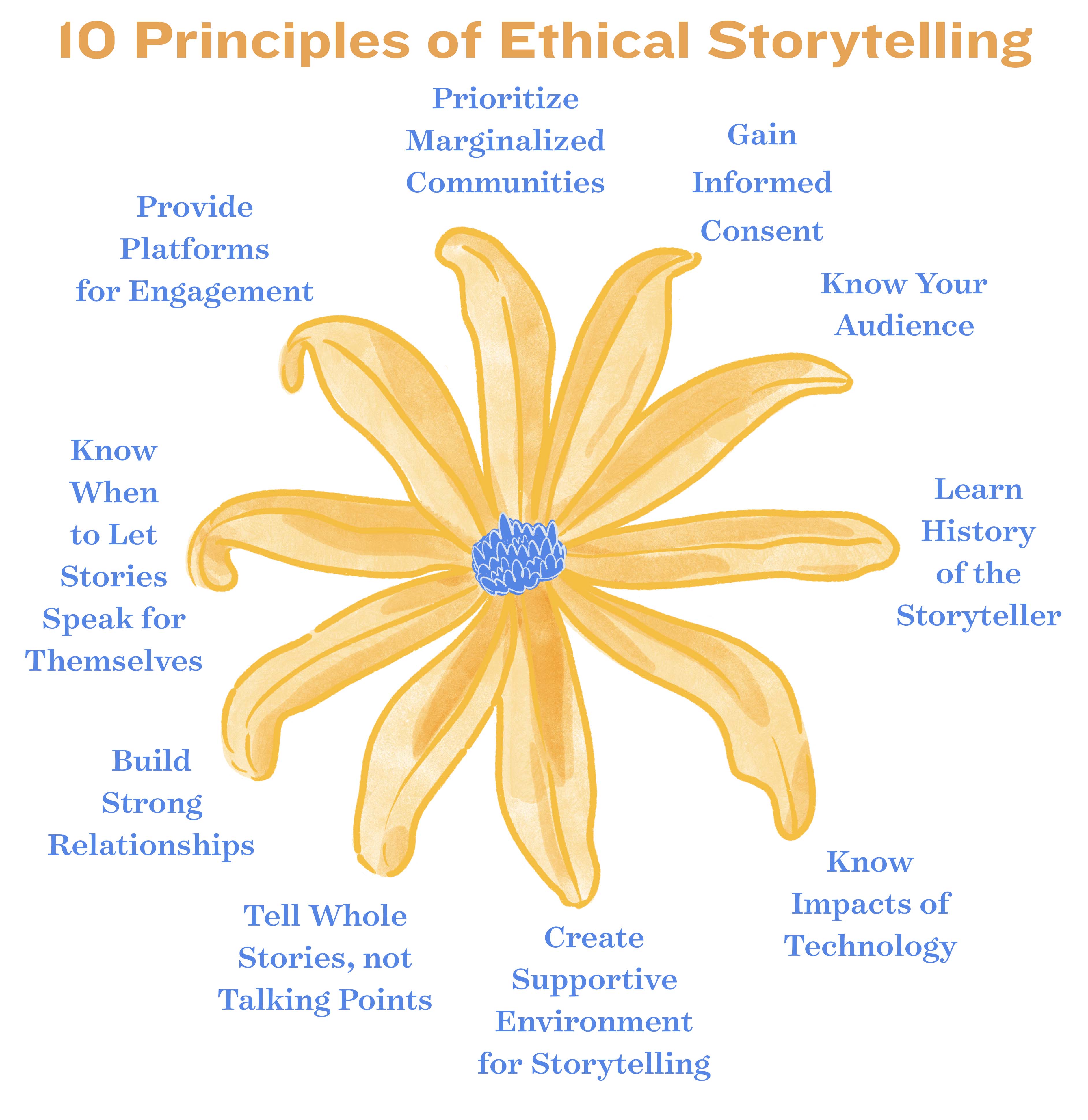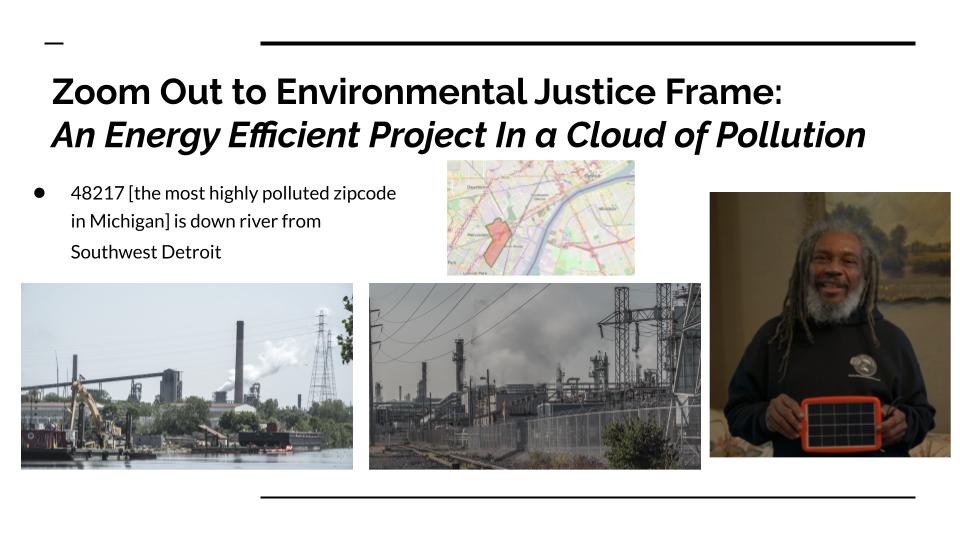By: Molly Bertolacini and Marissa Ramirez
Edited By: Jalissa Williams
For thousands of years, storytelling has been used to preserve culture and traditions. Personal narratives are integral for learning, connection, and growth to bring about social change. Our current housing crisis, wealth inequality, and climate change are intersectional issues - people and the power of storytelling are at the heart of systems change, bringing together the intersectional nature of the challenges we face to address the root cause. Stories are powerful drivers of policy change and can influence decision makers toward better outcomes on our positions, as well as strengthen our relationships with those who choose to share their experiences. Sharing stories ethically and responsibly is critical– especially as advocates from larger, national advocacy organizations. Over the last 6 years, Energy Efficiency for All (EEFA) national and local partners have worked to evolve our advocacy and community engagement tactics. Centering ethics in storytelling is one method that EEFA has explored to shift the power dynamics previously established in EEFA’s advocacy work, particularly around community-driven climate and housing policy.
The EEFA Storytelling Working Group (STWG) works to humanize the often very technical work that EEFA does through meaningful narrative development, partnerships, and content creation. The Storytelling Team’s primary objective is to uplift and support existing storytellers within EEFA’s coalitions, whose stories often center both the experiences of residents, owners, and workers most impacted both by energy inequity, and EEFA’s work to address those inequities by advancing energy efficiency in multifamily affordable housing. What began simply as a strategy to expand the reach of EEFA’s policy advocacy to new audiences grew into a commitment to an ongoing learning process to identify how EEFA can more intentionally partner with community-based organizations.
As a collective, we have committed to engage responsibly with storytellers, so we have created and follow the Ten Principles of Ethical Storytelling. These principles have been shaped by the STWG’s experiences in collecting stories and building relationships with partners, as well as through an internal reflection on what it means to center racial equity and transformational change.
For a deeper dive into the methodology behind applying these principles to storytelling projects, please view Part 2 of this blog Exploring Ethical Storytelling for Transformational Relationships where the intricacies around power sharing and relationship building using storytelling are explored.
 Image Credit: Jessica Russo
Image Credit: Jessica Russo
Principles of Engagement
1. Gain Informed Consent
Advocates should receive consent to use stories for a broad range of uses prior to sharing stories more widely. By gaining informed consent individuals, including tenants, owners, workers, and coalition or governmental entities will retain ownership over how their stories are shared.
*Spotlight: In early 2021, the STWG mentored four students from San Francisco State University as writing interns. The students used background materials and previous stories from the National Housing Trust’s Where will we live and Voices Out Loud campaign to develop an informational 1-pager on storytelling in EEFA. They came across an inspiring story from a previous resident of an affordable apartment complex and wanted to uplift the experience in the 1-pager. Before proceeding, the STWG contacted our partners, who had maintained a connection with the resident, to ensure that they were comfortable using their story in this way. The resident enthusiastically agreed for their story to be shared and republished. *
2. Know Your Audience
When working with storytellers to share a story, it is important to identify the intended audience and outcome of the story. The appropriate story sharing tools will differ depending on who is expected to understand and absorb the content, and what message is intended to pervade.
3. Learn the Context and the History of the Storyteller
Advocates working with underserved communities must bear in mind historic inequities. For example, housing and energy policies of the past and present are responsible for many instances of racial segregation and displacement. Consequently, experiences of communities, especially communities of color impacted by these disparities may affect relationships with storytellers, comfort levels in sharing experiences, perceptions of the energy and housing sector, beliefs on who these systems benefit, and the ability for sustained change in the programs that energy and housing activities advocate for.
4. Understand the Impacts of Technology
As online and communication capabilities expand, so does the breadth of the reach to followers and readers. While improvements in technology can result in greater opportunities for impact in advocacy and for direct engagement by community members, advocates must stay up-to-date on policies and media norms. It is critical that advocates remember the privacy and security risks of the internet, and work to protect storytellers from misuse or manipulation of their stories via social media. It is also important that inclusive mediums are considered during the process, and that organizations acknowledge not all audiences have access to equivalent levels of technology.
5. Create a Supportive Environment for Storytelling
Story collection within the energy efficiency and affordable housing sectors may involve conversations with communities that have been historically excluded or exploited by oppressive systems. People may have endured years of racist housing and energy policies, and it is incumbent on the advocates to create a safe environment for storytellers to discuss their experiences.
Spotlight: In Georgia, state EEFA coalition partners worked with national partners to develop a video and a related blog to share the benefits of energy efficiency from a building owner’s perspective. National and state EEFA partners worked closely to establish ongoing communication throughout the story planning and development process, and they co-created the story’s purpose – to elevate the benefits of energy efficiency to Georgia decision-makers. The blog/video amplified the voices and goals of the local partners in Georgia and the residents facing the greatest energy burden, and by doing so, exemplified Principle #5 to create a positive environment for storytelling and center the communities most impacted.
6. Our Default Should be Whole Stories, Not Talking Points
Whole stories are more powerful and authentic, and can have a larger impact than generalized talking points. Advocates are often pressed to simplify and condense their issues into bullets that best capture their overall message or campaign. Energy and housing advocacy’s potential for impact and relationship-building is greater when advocates encourage storytellers to share their vulnerable, intersecting, and whole truths. It is a best practice to honor these authentic stories by sharing them in full, rather than condensing them into misleading headlines, clickbait, or incomplete excerpts.
7. Build Strong Relationships and Platforms
Energy and housing advocates have the opportunity to build bridges across a wide variety of sectors and stakeholder groups, but it is critical that they dedicate intentional time to cultivating strong and trusting relationships with those they work with. Successful partnerships are those that co-create solutions and propel the overall housing and environmental movement forward, rather than relying on transactional stopgaps.
Spotlight: Since 2019, a subset of EEFA members have been working on a project coined “Program Design for All” which explores how we define success within energy efficiency program design. They examined a recent utility rate case to uplift aspects of the intervention process that often go unreported but contain critical learnings, such as collaboration, partnerships, relationship building, and racial equity. Intervenors on the case were interviewed by EEFA staff members throughout the course of 2020-2021. Building trust and meeting people where they were at, especially given the unpredictability of the past year in the pandemic, was critical in carrying out successful interviews. Sometimes this meant slowing down the process to ensure that all partners were comfortable with the next steps and that everyone’s needs were being met, rather than rushing into content development.
8. Know When to Let Storytellers Speak for Themselves
In storytelling work, organizations and advocates should, as much as possible, allow and encourage people to share stories from their direct, lived experience. In energy policy and affordable housing, storytellers such as residents or building energy contractors should have opportunities to directly speak for themselves - with other residents or building owners in their community or in providing testimony to local decision-makers.
9. Provide Platforms and Opportunities for Storytellers to Engage in Participatory Processes
Energy and housing advocates have the opportunity to testify on the benefits of expanding energy efficiency and keeping rental housing affordable in front of utility regulators or legislators. Advocates should support community activism on these topics and uplift resident advocates by providing opportunities for them to engage directly. It can be powerful for renters and residents to provide in-person narratives on the ways energy efficiency and housing programs have impacted their health, comfort, financial burden, and overall living situation.
10. Prioritize Stories from Members of Underserved Communities and Uplift Resistance Stories
While all stories can be powerful communication tools for energy and housing outcomes, advocates should prioritize stories that have been collected from members of historically underrepresented communities as well as resistance stories and experiences that seek to dismantle racism and white supremacy. These stories have often been ignored or erased by the dominant culture and contain learnings that are critical to achieving transformational systems change.
Principles in Action
Since December 2019, the EEFA Storytelling Team has worked with the Michigan EFFA (MEEFA) coalition on a storytelling initiative in Detroit, Michigan. The project follows the story of a senior living facility, called Pablo Davis, that underwent renovations and energy efficiency upgrades. Final materials have been published on the EEFA website.
Throughout the partnership with MEEFA, we observed that Principle #6 was a shared value. The filmmaker weaves the original objective of the stories (to showcase the benefits of energy efficiency upgrades at Pablo Davis, made possible by Lower Income Housing Tax Credits (LIHTC)) into the complexity of overlapping historical and environmental justice narratives in Detroit. Pablo Davis represents one facility in a city with a long history of wealth inequality, pollution, and community organizing, and the project manages to show how this “inner story” of a successful building renovation connects to a broader energy justice lens.

Where we call home
Think about where you call home - home is often a place of respite after a day of work, or a place to share a meal with a family or friend for people who own or rent a home. People and real stories are the meaning behind policy and systems change in the energy and housing sectors. The 10 principles are a reminder and commitment to respect and honor the power of storytelling and people’s voice.

